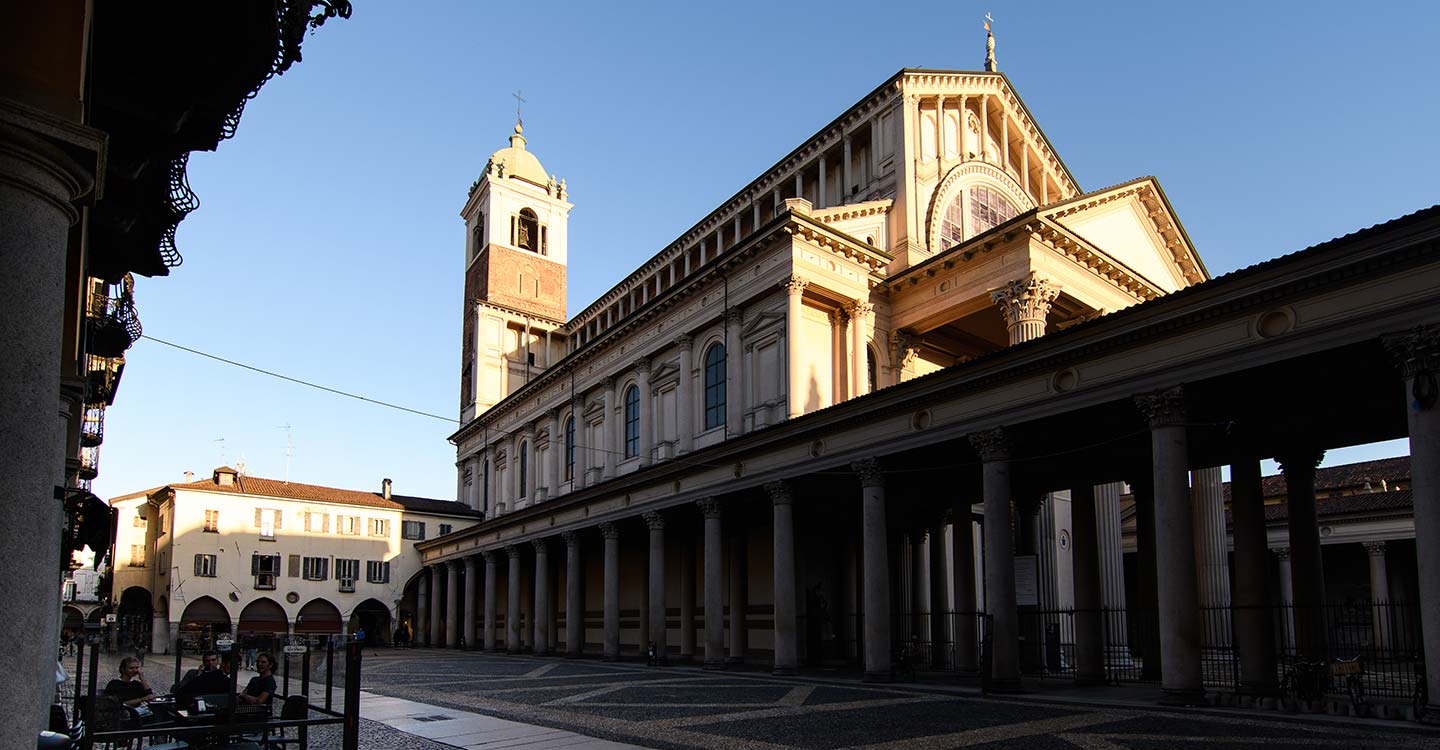The northwest corner of the square provides the most complete view of the cathedral, with Antonelli’s portico, composed of 56 monolithic columns, and the Romanesque bell tower. The tower was struck by lightning and renovated between 1625 and 1626, with the addition of the belfry and the copper domed roof.
Along the west side of the square stands Palazzo del Corpo di Guardia, built in the 16th century and renovated in Neoclassical style by Antonio Aresi in 1837. Plastic decorations by Grazioso Rusca highlight the military nature of the building; the bas-relief below the eaves depicts the reconciliation between the Guelphs and Ghibellines in 1310, in the presence of Emperor Henry VII; the female statue on the pinnacle is an allegorical figure of the city.
On the opposite side of the square stands Palazzo della Ministreria dei Poveri, built at the behest of the cathedral chapter from 1488. Four pointed arches on Serizzo granite columns support the first floor, which originally featured windows with terracotta frames.
The last arch of the Ministreria before the Cathedral leads through the only surviving archway of the Portico del Paradiso, which was the seat of the Council of the Consuls in the 12th century.
Along the northern side of the square are the old merchants’ porticos dating from the 16th century, with the entrance to the courtyard of the Broletto complex.
The area on the corner of Via Prina was occupied by the church of Sant’Ambrogio, founded in the 11th century and later demolished.




